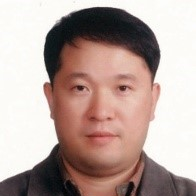Emerging Perovskite Materials: Synthesis, Properties and Diverse Applications
A special issue of Materials (ISSN 1996-1944). This special issue belongs to the section "Materials Chemistry".
Deadline for manuscript submissions: closed (10 September 2022) | Viewed by 959
.png)
Special Issue Editors
Interests: perovskite solar cells; dye-sensitized solar cells; photoelectrochemistry; electrochemistry; optoelectronic materials; energy storage devices
Special Issues, Collections and Topics in MDPI journals
Interests: energy conversion and storage; electrochemistry; supercapacitors; batteries; electrocatalysis; solar cells; solar fuels
Special Issues, Collections and Topics in MDPI journals
Special Issue Information
Dear Colleagues,
Perovskite is a calcium titanium oxide mineral with the crystal structure of ABX3. Any materials having a similar crystal structure of CaTiO3 are known as perovskite-structured materials. From the discovery of perovskite minerals in the 18th century, numerous perovskite-structured materials ranging from ceramic oxides to hybrid organic–inorganic semiconductors have been discovered. These specific crystal-structured materials have intriguing physical properties ranging from insulation to superconducting properties, which have been used for various applications including photovoltaic, optical, electrical, superconductors, magnetic, catalytic, and environmental applications.
This Special Issue will bring together high-quality research and review articles on synthesis, properties, and diverse applications of perovskite-structured materials. Topics include, but are not limited to:
- Hybrid organic–inorganic perovskite (HOIP) solar cells and perovskite tandem solar cells;
- Optoelectronic applications including light-emitting diodes (LEDs), imaging, photochromic, electrochromic, image storage, X-ray sensing and luminescent solar concentrator (LSC) devices;
- Piezoelectric, dielectric, ferroelectric, thermoelectric, pyroelectric, and superconducting applications;
- Ferromagnetic, antiferromagnetic and superparamagnetic applications;
- Photocatalytic water splitting, solid oxide fuel cells (SOFCs), solid oxide electrolyzer cells (SOECs), hydrogen evolution reaction (HER), oxygen evolution reaction (OER), oxygen reduction reaction (ORR), water–gas shift reaction, electrochemical sensing, biosensors, and vehicle exhaust emission control reactions including, diesel soot oxidation, N2O decomposition, low-temperature CO oxidation, automobile exhaust purification, oxidation of volatile organic compounds, etc.
Prof. Dr. Yongseok Jun
Dr. Suresh Kannan Balasingam
Guest Editors
Manuscript Submission Information
Manuscripts should be submitted online at www.mdpi.com by registering and logging in to this website. Once you are registered, click here to go to the submission form. Manuscripts can be submitted until the deadline. All submissions that pass pre-check are peer-reviewed. Accepted papers will be published continuously in the journal (as soon as accepted) and will be listed together on the special issue website. Research articles, review articles as well as short communications are invited. For planned papers, a title and short abstract (about 100 words) can be sent to the Editorial Office for announcement on this website.
Submitted manuscripts should not have been published previously, nor be under consideration for publication elsewhere (except conference proceedings papers). All manuscripts are thoroughly refereed through a single-blind peer-review process. A guide for authors and other relevant information for submission of manuscripts is available on the Instructions for Authors page. Materials is an international peer-reviewed open access semimonthly journal published by MDPI.
Please visit the Instructions for Authors page before submitting a manuscript. The Article Processing Charge (APC) for publication in this open access journal is 2600 CHF (Swiss Francs). Submitted papers should be well formatted and use good English. Authors may use MDPI's English editing service prior to publication or during author revisions.
Keywords
- perovskite solar cells
- solid oxide fuel cells
- solid oxide electrolyzer cells
- superconductors
- optoelectronic devices
- piezoelectric materials
- photocatalytic materials
- perovskite materials
- magnetic materials
- hydrogen evolution reaction
- oxygen reduction reaction







